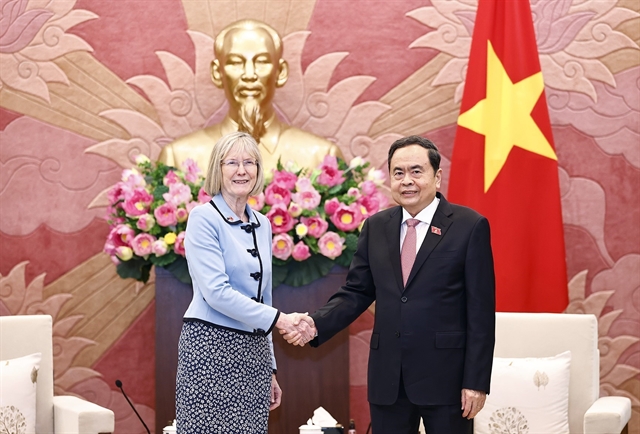 Life & Style
Life & Style

Six years ago, Vietnamese xoan singing joined the United Nations Educational, Scientific and Cultural Organisation (UNESCO) list of intangible cultural heritage in need of urgent safeguarding during its 2011 meeting in Bali.
 |
| Young blood: Teen xoan singers from Kim Đức Ward, Phú Thọ. — VNS Photo Việt Thanh |
HÀ NỘI — Six years ago, Vietnamese xoan singing joined the United Nations Educational, Scientific and Cultural Organisation (UNESCO) list of intangible cultural heritage in need of urgent safeguarding during its 2011 meeting in Bali, Indonesia.
Now, the Intergovernmental Committee for the Safeguarding of the Intangible Cultural Heritage, which recognised xoan at its meeting in Bali, is holding its 12th session on South Korea’s Jeju Island, where its members will review Việt Nam’s efforts to preserve and restore the folk singing. They will mull whether to lift it from the committee’s list of intangible cultural heritage in need of urgent safeguarding and potentially include it on its Representative List of the Intangible Cultural Heritage of Humanity.
The work of the Phú Thọ provincial authority has been critical to the revival of the ancient singing art, which historians say may date back over 2,000 years to the time of very first Vietnamese tribal kings. Numerous programmes aim to rejuvenate the art, including the immediate restoration of the four historic singer guilds, the digitalisation of existing xoan performances, including it as a part of local community festivals, and training young apprentices under the guidance of master singers.
The years of dedication and determination are now bearing fruit. Xoan singing has not only reclaimed its rightful place as a revered art of the province’s cultural heritage, it is also gathering a large audience as well as many devoted practitioners, many of them teenagers.
“The province’s campaign could be considered as a model to revive and popularise cultural heritage. They have done much more than just bringing back the xoan singing,” said associate professor Đặng Hoành Loan, an advisor who helped build a dossier for the art that was submitted to UNESCO in 2010.
“Xoan singing was largely absent in many places I went back then to conduct my study. Now there are guilds of singers that enjoy strong support from their own communities,” he said. “Even children are learning how to perform xoan singing. You see, it’s hard to preach to them that they have to preserve something intangible, but it’s a lot easier if you show them how to sing.”
The revival of the art has accompanied the restoration of some 19 historical sites across the province, said to be holy places where xoan singing originated and was performed in the past, according to the provincial People’s Committee Deputy Chairman Hà Kế San.
Xoan singing is practised in Phú Thọ, often during the first two months of the lunar year. Traditionally, singers performed songs in sacred spaces such as temples, shrines and communal houses for the spring festivals.
There are three forms of Xoan singing: worship singing for the Hùng kings and village guardian spirits; ritual singing for good crops, health and luck and festival singing where villagers alternate male and female voices in a form of courtship.
Bài Chòi (Folk Singing) nominated as Cultural Heritage
Also at the meeting in Jeju, the art of bài chòi (a traditional Vietnamese game combining folk singing and selections from a deck of card) in Central Việt Nam will contend to join the Representative List of the Intangible Cultural Heritage of Humanity.
The Central Việt Nam bài chòi dossier, which has been jointly compiled by the Việt Nam National Academy of Music and nine central provinces and cities from Quảng Bình to Khánh Hòa provinces, was submitted to UNESCO in March 2016.
Bài chòi, which combines the word bài (a deck of cards) and chòi (bamboo hut), has a range of performance styles: folk songs, poem-reciting, acting, storytelling and music performed on traditional instruments.
It is said that feudal mandarin Đào Duy Từ (1571-1643) invented bài chòi to entertain people during holidays. Bài chòi is popular in the central region.
The 12th session of the Intergovernmental Committee for the Safeguarding of the Intangible Cultural Heritage will end this Saturday — VNS









